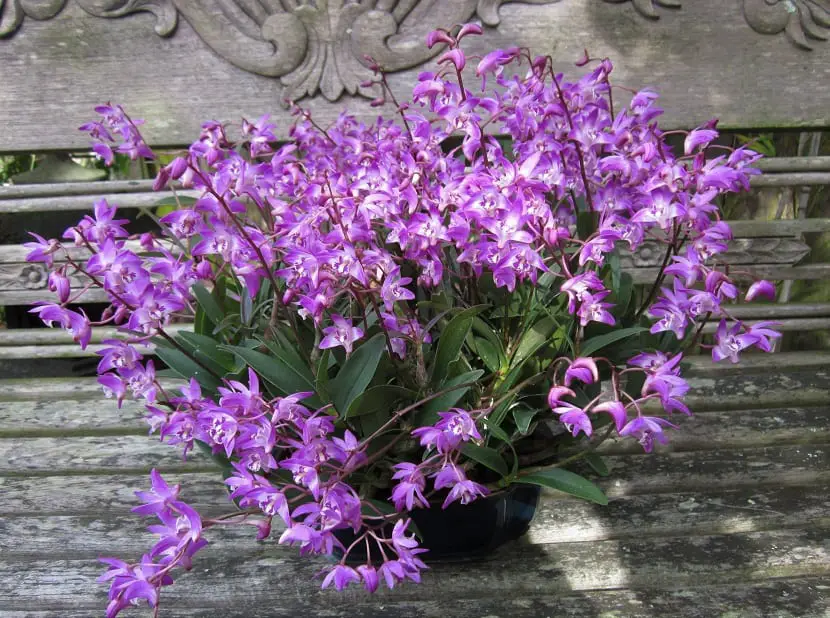
The Dendrobium Kingianum It is a species of the lithophyte type, of the Orchidaceae family and is endemic to Australia, this being a very attractive little orchid. Their colonies can be seen in colors ranging from pink to white. It thrives on rocks, although it can also grow among decaying foliage in rock crevices.
To this orchid that is widespread in the geography of Queensland in the Commonwealth of Australia and the Hunter River in New South Wales, It can be seen at heights that vary from 50 to 1200 meters above sea level.

This lithophyte species grows on rocks and cliffs where quite dense colonies are formed. In appropriate conditions for its development, this flower forms its locks quickly. Its pseudobulbs are elongated and thin, with a wide base and narrow apex, and the flowers appear on the stems from the upper area of each pseudbulb, forming clusters of 2 to 15 flowers with sepals and petals that, depending on the variety, can be pink or white. Like many orchids, flowering occurs from winter to spring.
The soft, porous roots quickly absorb moisture and nutrients from the rock, so that even incipient rain or dew are beneficial to the plant. This species has a series of mechanisms that allow it to adapt to apparently hostile habitats, such as its ability to reflect light during the dry season to avoid excess heat. Likewise, its pseudbulbs serve to store water for the dry season.
Growing and caring for Dendrobium Kingianum
This is an easy species to grow, it can be planted on rocks or on branches of other trees, from where acquires the necessary sustenance from the decomposition of the foliage accumulated around its roots. It is recommended to fix the plant with any filament, while the orchid establishes and strengthens its roots. It should never be planted in the ground, because its root system is not suitable for constant humidity. It can also be grown in pots, preferably large and with some thick medium, which could well be pine bark.
This plant it can withstand temperatures of 38º during the day and 15º at night in the summer, so its planting in a greenhouse is not necessary, unless it is going to be planted in a very cold environment, because it does not tolerate frost. Dense shade affects flowering. The use of fertilizer during growth is advised for healthy growth.
Regarding irrigation, this is reduced from autumn until the resumption of its growth, during the winter it should be watered to a minimum. It is important to maximize the lighting of the plants so that it preserves periods of luminosity between 14 and 16 hours a day, while water is reduced as the weather gets colder to strengthen plants. Therefore, it is essential to be attentive to the climatic seasons, to ensure good flowering and keep the plants vigorous.
It can be obtained in Australian nurseries dedicated to the cultivation of Orchidaceaes. This species is propagated by segmentation of the group. However, the propagation itself requires a lot of knowledge in the field.
Plagues and diseases

As with most orchids, excess moisture can cause serious problems for Dendrobium Kingianum roots, such as rot. Likewise, it can cause a reduction in the number of leaves. Moisture can cause fungi to appear that can affect the plant in a short time.
In relation to pests, there are a variety of them that attack the orchid, among which we can mention the mealy bug, the scale and the annoying aphids or aphids. These critters and especially aphids can end the flowering of the plant in a short periodIn addition, they transmit a series of very harmful viruses. In addition to those already mentioned, there are also the oniscidae known as mealybugs, slugs, snails and nematodes, which attack roots, leaves and flowers of the orchid, killing the plants.

